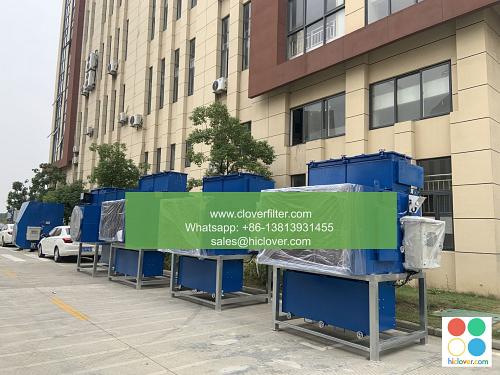How Air Filter Integrations Can Improve Indoor Air Quality in Schools

Indoor air quality (IAQ) is a critical aspect of maintaining a healthy and productive learning environment in schools. Poor IAQ can lead to respiratory problems, allergies, and decreased cognitive function, ultimately affecting student performance and overall well-being. One effective way to enhance IAQ in schools is through the integration of advanced air filtration systems. In this article, we will explore the benefits of air filter integrations and their various application areas in improving indoor air quality in educational settings.
Benefits of Air Filter Integrations
Air filter integrations can significantly improve indoor air quality by removing airborne pollutants, allergens, and viruses. Some of the key benefits of air purification systems include:
* Removal of particulate matter (PM): Air filters can capture particles as small as 0.3 microns, including dust, pollen, and other airborne pollutants.
* Reduction of volatile organic compounds (VOCs): Air filters can absorb and break down VOCs, which are known to cause respiratory problems and other health issues.
* Elimination of bacteria and viruses: Advanced air filters, such as HEPA filters and UV air purifiers, can kill or capture bacteria and viruses, reducing the risk of airborne diseases.
Application Areas for Air Filter Integrations
Air filter integrations can be applied in various areas of a school to improve indoor air quality, including:
*
* Corridors and hallways: Air filters can be integrated into the ventilation system to purify the air in high-traffic areas.
* Cafeterias and kitchens: Air filters can help remove cooking fumes, grease, and other pollutants from the air, improving the overall indoor air quality.
* Administrative offices: Air filters can be installed in administrative offices to create a healthy and comfortable work environment for staff and faculty.
Technologies and Solutions
There are various air filtration technologies and solutions available for schools, including:
* HEPA filters: High-efficiency particulate air (HEPA) filters can capture 99.97% of particles as small as 0.3 microns.
* Activated carbon filters: These filters can absorb and break down VOCs, odors, and other gases.
* UV air purifiers: Ultraviolet (UV) light can kill or capture bacteria, viruses, and other microorganisms.
* Smart air filtration systems: These systems can monitor and adjust air quality in real-time, providing optimal filtration and energy efficiency.
Implementation and Maintenance
To ensure the effective implementation and maintenance of air filter integrations, schools should consider the following:
* Regular filter replacement: Filters should be replaced regularly to maintain optimal air quality and prevent filter degradation.
* Air quality monitoring: Schools can install air quality monitors to track indoor air quality and adjust filtration systems as needed.
* Staff training: School staff should be trained on the proper use and maintenance of air filtration systems to ensure optimal performance.
Conclusion
Air filter integrations can play a critical role in improving indoor air quality in schools, creating a healthier and more productive learning environment for students and staff. By understanding the benefits and application areas of air filtration systems, schools can take the first step towards providing a healthy indoor environment that supports academic success and overall well-being. As the importance of indoor air quality continues to grow, the integration of advanced air purification technologies will become an essential aspect of maintaining a safe and healthy educational environment. It looks like you started to type but didn’t finish your thought. Could you please provide more context or complete your question so I can better assist you?

